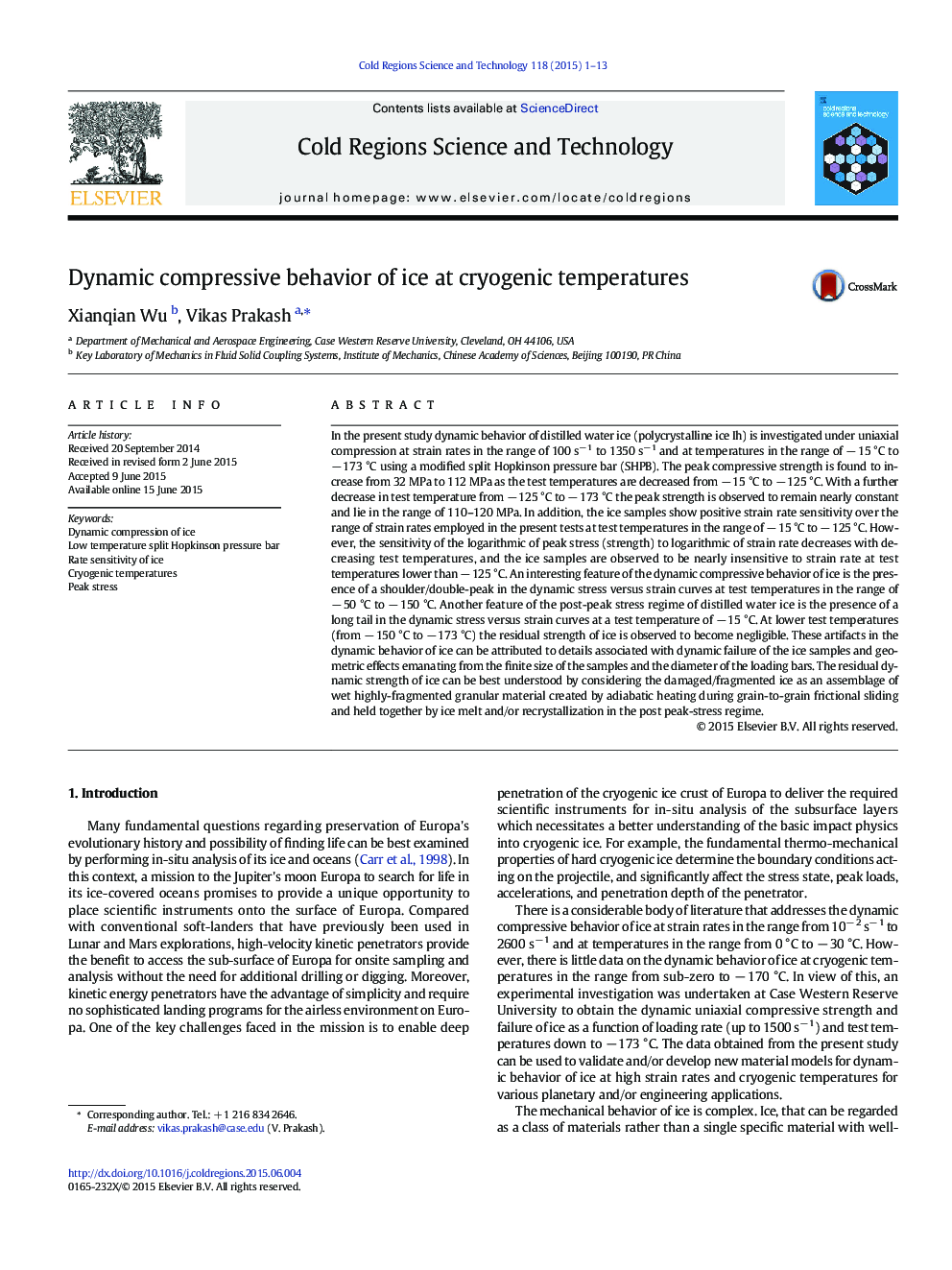| Article ID | Journal | Published Year | Pages | File Type |
|---|---|---|---|---|
| 6426768 | Cold Regions Science and Technology | 2015 | 13 Pages |
Abstract
In the present study dynamic behavior of distilled water ice (polycrystalline ice Ih) is investigated under uniaxial compression at strain rates in the range of 100 sâ 1 to 1350 sâ 1 and at temperatures in the range of â 15 °C to â 173 °C using a modified split Hopkinson pressure bar (SHPB). The peak compressive strength is found to increase from 32 MPa to 112 MPa as the test temperatures are decreased from â 15 °C to â 125 °C. With a further decrease in test temperature from â 125 °C to â 173 °C the peak strength is observed to remain nearly constant and lie in the range of 110-120 MPa. In addition, the ice samples show positive strain rate sensitivity over the range of strain rates employed in the present tests at test temperatures in the range of â 15 °C to â 125 °C. However, the sensitivity of the logarithmic of peak stress (strength) to logarithmic of strain rate decreases with decreasing test temperatures, and the ice samples are observed to be nearly insensitive to strain rate at test temperatures lower than â 125 °C. An interesting feature of the dynamic compressive behavior of ice is the presence of a shoulder/double-peak in the dynamic stress versus strain curves at test temperatures in the range of â 50 °C to â 150 °C. Another feature of the post-peak stress regime of distilled water ice is the presence of a long tail in the dynamic stress versus strain curves at a test temperature of â 15 °C. At lower test temperatures (from â 150 °C to â 173 °C) the residual strength of ice is observed to become negligible. These artifacts in the dynamic behavior of ice can be attributed to details associated with dynamic failure of the ice samples and geometric effects emanating from the finite size of the samples and the diameter of the loading bars. The residual dynamic strength of ice can be best understood by considering the damaged/fragmented ice as an assemblage of wet highly-fragmented granular material created by adiabatic heating during grain-to-grain frictional sliding and held together by ice melt and/or recrystallization in the post peak-stress regime.
Keywords
Related Topics
Physical Sciences and Engineering
Earth and Planetary Sciences
Earth and Planetary Sciences (General)
Authors
Xianqian Wu, Vikas Prakash,
